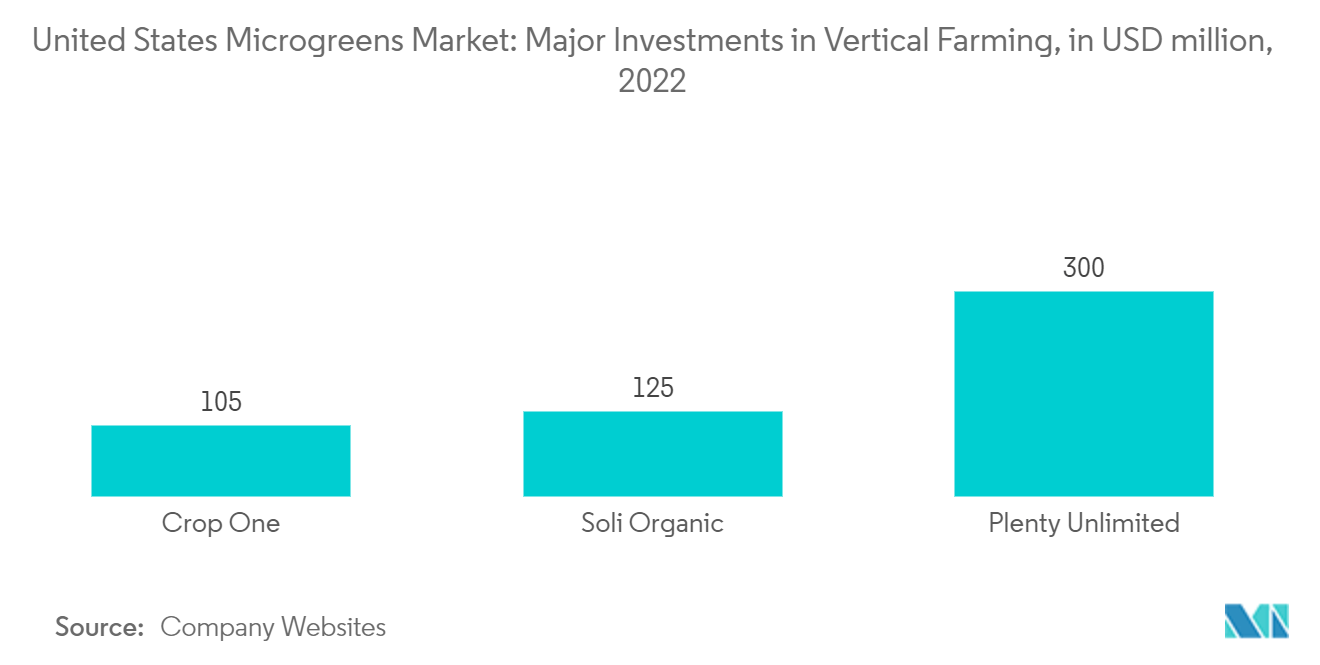Market Trends of United States Microgreens Industry
Increasing Adoption of Protected Cultivation is Expected to Boost the Market
Greenhouse adoption in the United States has increased steadily over the years. Owing to population and the subsequent demand for food, farmers are increasingly turning to high-tech solutions like greenhouse farming and vertical agriculture, given the limitations of arable land. Simultaneously, a rising health consciousness among consumers pushing for nutrient-rich diets is fueling the adoption of protected cultivation practices in the country.
The shift to greenhouse farming and vertical farming allows growers to have precise control over the cultivation environment, leading to more efficient management and, notably, increased yields in microgreens. Additionally, the controlled setting of protected cultivation can positively impact crop genetics, yielding healthier varieties. In contrast, traditional open-field cultivation exposes crops to risks from pests, locusts, and other wildlife, necessitating heavy pesticide use, a challenge largely avoided by greenhouse and vertical farming.
Pea shoots, kale, baby spinach, and a variety of other crops, including amaranth and bok choi, dominate the greenhouse landscape in the United States, aligning with the rising consumer appetite for these products. Key players like BrightFarms Inc., Soli Organic Inc., Plenty, and Fresh Origins are at the forefront of leveraging greenhouse structures for their microgreen crops in the United States. For instance, the "2022 Census of Agriculture - UNITED STATES DATA" revealed that 11,465 farms operate greenhouses for cultivating vegetables and fresh-cut herbs.

Increasing Demand for Microgreens from Health-conscious Consumers
The United States is witnessing a surge in interest in fresh, functional foods driven by a health-conscious consumer base. Microgreens, known for their rich polyphenol content, offer potent antioxidants, potentially lowering the risk of various diseases, including heart disease, Alzheimer's, diabetes, and certain cancers. According to the United States Department of Agriculture (USDA), 100 gm of green leaf lettuce microgreens contain low levels of fat, carbohydrates, and sugars while offering moderate amounts of protein and fiber. It consists of 15 kcal energy, 1.36 grams of protein, 1.3 grams of dietary fiber, and 95 grams of water.
The growing popularity of salads, especially Caesar salads and salad bars, is driving the increased consumption of lettuce and chicory microgreens in the region. For instance, according to data from the USDA, the per capita consumption of fresh romaine and leaf lettuce in the United States rose from 12.3 pounds in 2019 to 12.7 pounds in 2022. Furthermore, microgreens, including pea shoots, kale, baby spinach, and broccoli, are witnessing a surge in demand, especially from major food and retail chains, promising a sales trajectory in the coming years. Kale microgreens, a standout in the US market, are prized for their high antioxidant, amino acid, vitamin, and mineral content. These are widely incorporated in salads, sandwiches, omelets, and pizza and enjoy immense popularity, particularly in restaurant settings. For instance, over 134 stores across the United States offer microgreens for sale.


